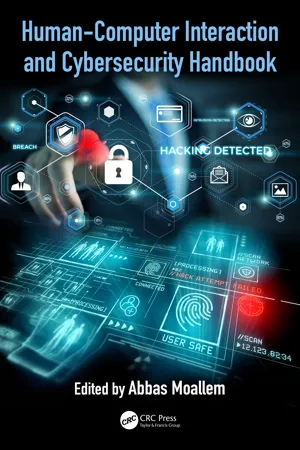9.1Introduction
With the speedy expansion of the Internet and Internet-based technologies in homes, the connection of a household to an Internet service provider has become as common as connecting to the basic utility providers for electricity and gas. According to Internet Live Stats (2016), 88.5% of the United States, and 40% of the world population, are Internet users. Users, moreover, are not typically satisfied with having just their computer connected to the Internet. They need wireless connections at home for their computer devices, and cross access connections that allow them to view, modify, and control their computer devices. Users also need to control and monitor security and problem-solve to maintain an uninterrupted Internet connection and a secure network.
Not long ago, home Internet connections were limited to computers. Now, gradually, within a “smart home” (Cheng and Kunz 2009), a wide range of computers and computerized devices can be connected and interact globally and with each other. However, after initial configuration, users are advised to conduct frequent monitoring of the interactions of each device and to frequently check security settings of each device (updating firmware, viewing the connected devices, changing passwords, and so on). Frequent monitoring provides a method of examining the router to ensure that it has not been hacked. For instance, monitoring can display all the devices connected to the user’s network, so any unauthorized devices can be easily identified.
Today, roughly 9 in 10 American adults use the Internet (Pew Research Center 2017). It is estimated that households have 10 connected devices now, projected to rise to 50 connected devices per home by 2020 (Phadnis 2016). More devices mean a wider number of systems and accounts that require user management. For example, managing a switch box that turns one Ethernet connection into several, allowing multiple wired devices to connect to the Internet without overloading the router, or eliminating bottlenecks to make sure that the modem/router can handle the broadband speeds.
Despite the increasing value of the information stored on devices connected to a home wireless network, users are also presented with the threat of network privacy and security breaches. User habits, and knowledge of network features and safety, are thought to have a great impact on risk rates.
9.1.1Passwords
Most users are under the impression that a complex password will keep them safe from breaches. However, reports indicate that even a complex password is not necessarily a secure password (McMilllan 2014). In addition, in October 2107, new research from security researcher Mathy Vanhoef of KU Leuven, in Belgium, found that a flaw in the cryptographic protocols of Wi-Fi protected access II (WPA2) could be exploited to read and steal data that would otherwise be protected. In some situations, this vulnerability even leaves room for an attacker to manipulate data on a Wi-Fi network, or inject new data into it. In practice, that means hackers could steal users’ passwords, intercept their financial data, or even manipulate commands to, say, send their money to hackers (Newman 2017).
9.1.2Beyond passwords
Users who follow the basic device setup guides, but who want to further configure the security of their devices, are struck with two deficiencies: the lack of the knowledge of what proper preventative measures are and the lack of the skill to implement preventive actions [how to do it using device user interface (UI)]. Users with limited networking experience generally claim that managing a home network beyond the basic setup protocols of the devices is a tedious, difficult task.
People who have a home networking device have more than likely experienced a variety of home networking UI issues. They might have even asked someone with technical knowledge to help with installing, connecting, and configuring the device that they acquired or had problems with. No matter the type of device—a wireless router or an interactive TV can very quickly become complicated.
9.1.3Network usability problems
Edwards et al. (2011) concludes that “network usability problems run deep because the technology was initially developed for research labs and enterprise networks and does not account for three unique characteristics of the home: 1) lack of professional administrators, 2) deep heterogeneity, and 3) expectations of privacy.”
9.1.3.1No professional administrators
The issues that seem to be related to user difficulties with network security technology are that UIs are built for advanced users with information technology (IT) backgrounds, heterogeneity in users and home networking configurations, and the complexity of problem-solving home network issues. For example, Grinter et al. (...
